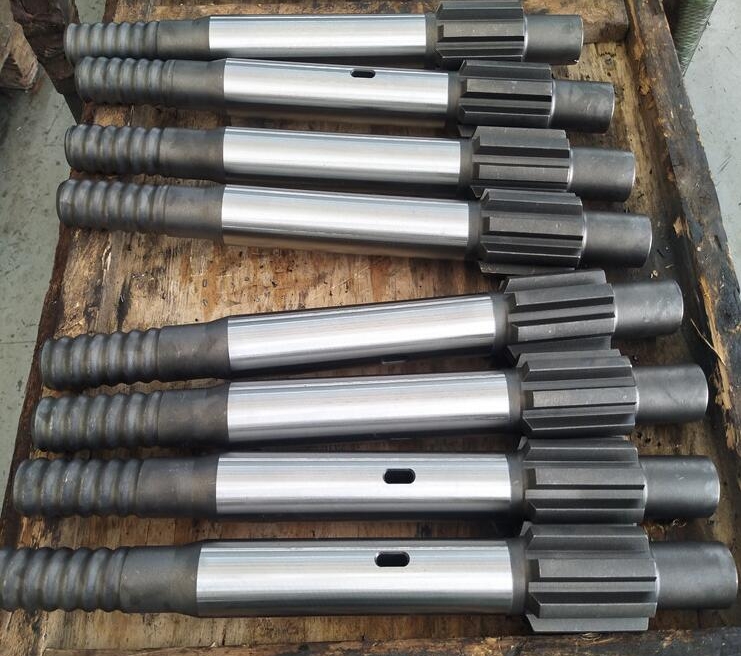What are the different types and designs of shank adapter?
shank adapter, as a vital component in rock drilling machinery, has various classifications and styles to meet different working needs. The main common types include shoulder (flange) type, lug (lug) type and spline type.
The cross-section of the shoulder-type shank adapter is usually hexagonal and has two specifications: the diameter of the inscribed circle is 22mm and 25mm respectively, and the length is 108mm and 159mm. This shank is manufactured through a forging process and is often used on light rock drills due to its high efficiency.
The drill lug type shank adapter is suitable for medium-sized internal rotary guide rail rock drills. Its drill rod diameters are available in two specifications: 25mm and 32mm to meet the needs of different machine models.
For heavy-duty rail-type external rotary rock drills with higher torque requirements, splined shank tails are an ideal choice. The drill rod diameter of this type of shank adapter is usually above 38mm and is usually manufactured by machining.
In China's mining operations, shank adapters are mainly made of two high-quality steels, 35SiMnMoV or 24SiMnNi2CrMo. Among them, the shank adapter made of 24SiMnNi2CrMo steel has a long service life and can avoid damage to the piston due to excessive hardness. Generally speaking, the hardness of the shank adapter should be slightly lower than the hardness of the piston, and the HRC value is between 38 and 45.
In addition, in order to ensure the accuracy of the shank adapter details and processing quality, the manufacturing process should use dedicated CNC machine tools and processes. Uniform heat treatment and scientific straightening using instruments can ensure the straightness and shock resistance of the shank adapter, thereby improving rock drilling efficiency and safety.





